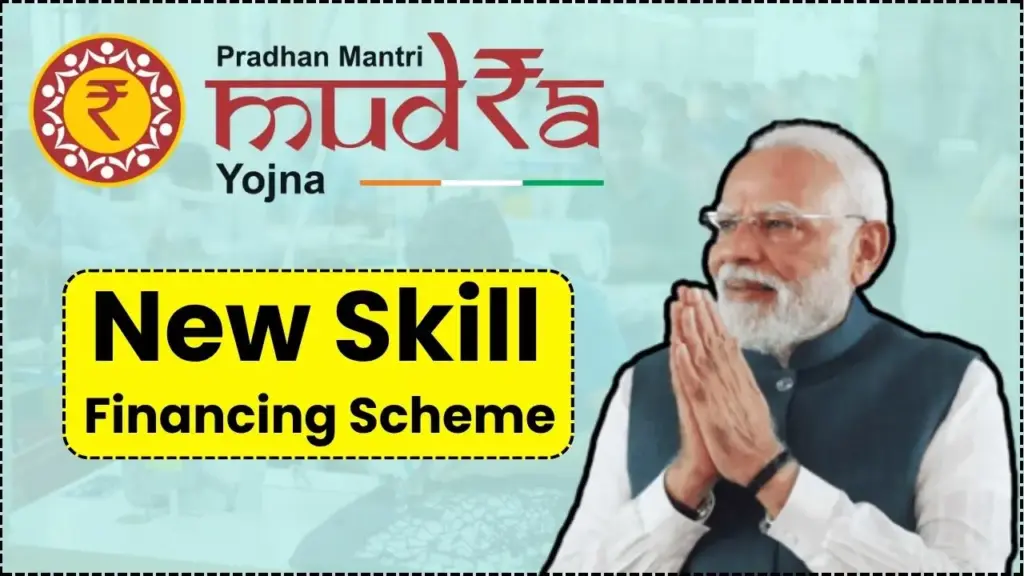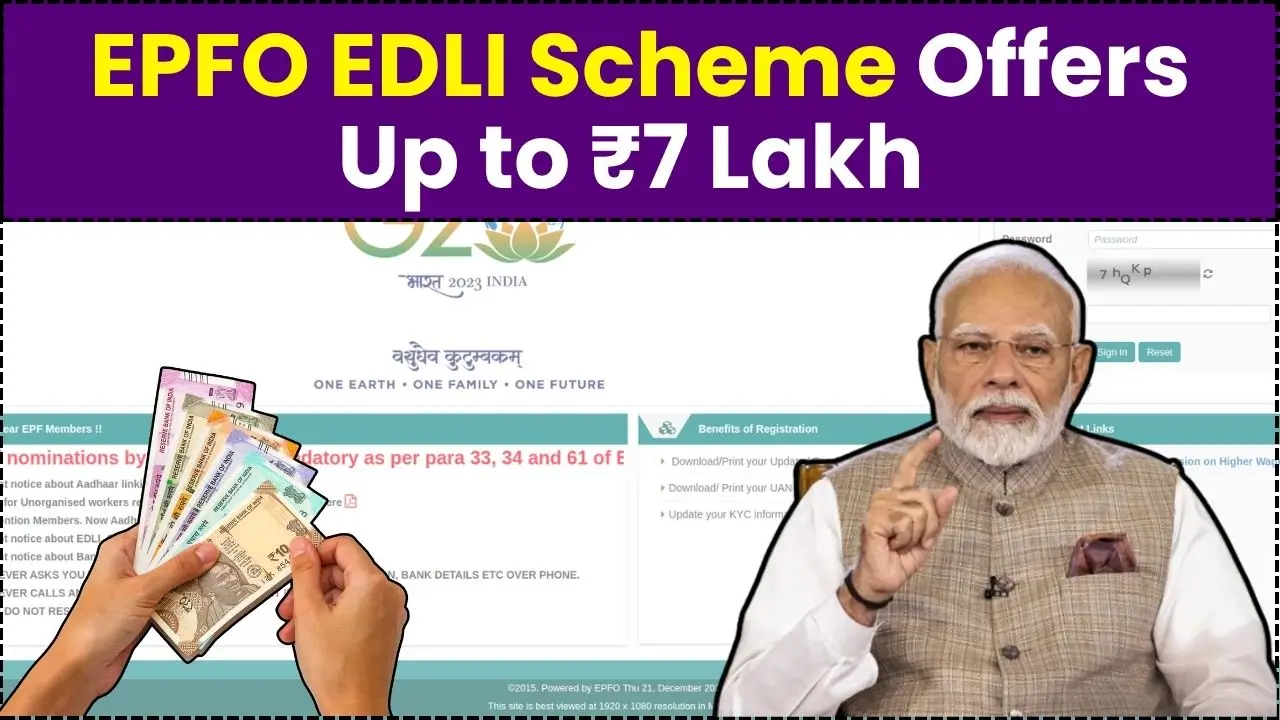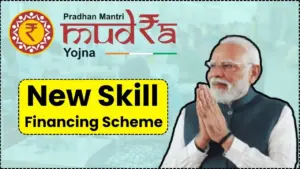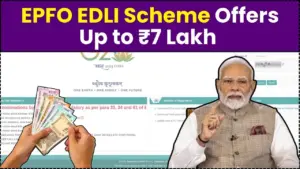The Pradhan Mantri Kaushal Mudra Yojana is positioned as a finance-first push to make advanced, industry-ready training affordable and accessible, especially in high-demand sectors like renewables, semiconductors, EVs, and defence. It focuses on inclusion for women, rural youth, and persons with disabilities, pairing credit access with quality standards and outcome tracking so learners can confidently invest in future-ready skills without prohibitive upfront costs. Framed as a finance-first approach to skilling, it aims to make advanced, industry-aligned courses accessible with easier credit, better protections for lenders, and real focus on outcomes for learners.

The idea is simple but powerful: unlock affordable loans for future-ready training in sectors like renewables, semiconductors, EVs, and defence, while ensuring inclusivity for women, rural youth, and PwD candidates. Instead of scrambling for fees or settling for lower-quality options, learners can choose accredited programs with better placement potential backed by a structured model that blends credit guarantees, interest support, and blended finance to keep costs in check.
New Skill Financing Scheme
| Key Aspect | Details |
|---|---|
| Scheme Name | Pradhan Mantri Kaushal Mudra Yojana (PMKMY) |
| Status | Likely to be unveiled in Budget 2026–27 |
| Duration | Five-year skills financing plan |
| Priority Sectors | Renewables, semiconductors, EVs, defence, and other sunrise areas |
| Access | Financing for high-end courses at government and private providers |
| Inclusion Focus | Women, rural youth, and PwD candidates |
| Risk Mitigation | Credit guarantees and improved underwriting data |
| Affordability Tools | Interest subvention and blended finance via CSR/philanthropy |
| Policy Context | Part of a comprehensive skills financing model under MSDE |
The idea is simple but powerful: unlock affordable loans for future-ready training in sectors like renewables, semiconductors, EVs, and defence, while ensuring inclusivity for women, rural youth, and PwD candidates. Instead of scrambling for fees or settling for lower-quality options, learners can choose accredited programs with better placement potential backed by a structured model that blends credit guarantees, interest support, and blended finance to keep costs in check.
If India wants job-ready talent for its fastest‑growing sectors, financing must sit at the heart of skilling not on the sidelines. The Pradhan Mantri Kaushal Mudra Yojana points in exactly that direction, pairing affordable credit with quality controls so learners can step into advanced programs without being priced out. By aligning loans to accredited, outcome‑driven courses and backing lenders with guarantees and interest support, the model tackles the real bottlenecks access, affordability, and accountability.
Why A Skill Financing Scheme Now
Advanced training delivers better placements but comes with higher fees financing bridges that gap. By de-risking lenders through guarantees and standardised data, the scheme can expand access to low-collateral or collateral-free skill loans at scale. It dovetails with ongoing skill ecosystem reforms prioritising employability, on-the-job training, and new-age curricula aligned to industry demand.
Linkage To the Mudra Architecture
The “Kaushal Mudra” positioning signals an intent to leverage the proven Mudra distribution backbone for last‑mile, small-ticket credit delivery. Over the past decade Mudra has scaled unsecured microcredit through banks, NBFCs, and MFIs an infrastructure that can be adapted for learner financing. This continuity can speed adoption, streamline processes, and build confidence for both lenders and trainees.
How PMKMY Could Work For Learners
Learners may receive concessional loans for accredited, high-end courses that meet quality and placement norms. Targeted interest support can lower EMIs for priority groups and regions, while a credit guarantee framework reduces risk premiums for lenders. A blended finance window can subsidise fees or interest for disadvantaged cohorts, expanding reach without diluting standards.
Who Stands To Benefit
Youth and mid‑career learners aiming to upgrade into high-growth roles in EVs, chips, defence manufacturing, green energy, and advanced services will benefit most. A dual focus on government and private high‑end providers widens choice while nudging institutions to meet accreditation, reporting, and placement thresholds to stay eligible for financed enrolments.
What Current Outcomes Indicate
Placement conversion under earlier grant-led models has varied, highlighting the need for tighter alignment between training, financing, and jobs. PMKMY adds the missing finance layer to support premium, outcome‑oriented programs. Combining financing with on‑the‑job training and industry-linked curricula can improve employability and wage outcomes at scale.
What To Watch In The Budget Window
Keep an eye on the overall outlay, per‑learner caps, eligible course lists, accreditation norms, interest subvention rates, and guarantee coverage. Lender participation rules, documentation, and process flows will matter for turnaround time. Expect integration with Skill India platforms for application, verification, and transparent placement reporting.
If you run a training institute, audit your placement metrics, align curricula to industry demand, and prepare to meet eligibility norms. If you’re a lender, start building the appraisal, verification, and outcomes data rails now. The inflection point isn’t just about more skilling it’s about making the best skilling financially reachable, measurably effective, and ready for the future.
FAQs on New Skill Financing Scheme
What Is the Pradhan Mantri Kaushal Mudra Yojana?
It’s a proposed five-year skills financing initiative to make high-end, accredited training affordable, with a strong push for sunrise sectors and inclusion for women, rural youth, and PwD learners.
How Will PMKMY Make Training Affordable?
Through a mix of credit guarantees to de‑risk lenders, targeted interest subvention, and blended finance using CSR/philanthropy to lower effective learner costs.
How Much Funding Can A Learner Get?
Per-learner caps will be specified in the official notification. The model aims to cover high-end course fees through concessional loans, with interest support or guarantees where applicable to improve affordability.
How Does This Link to PMKVY And Skill India?
It adds a financing layer to restructured, demand‑driven programs with stronger industry alignment, on‑the‑job training, and new‑age courses.
Will It Use the Mudra Infrastructure?
The Kaushal Mudra framing indicates alignment with Mudra’s nationwide unsecured credit distribution, adapted for skill loans.
How Do I Prepare to Apply?
Shortlist accredited, outcome‑focused courses, gather KYC and income documents, and track official announcements for eligibility and lender lists. Training providers and lenders may publish checklists and timelines once the scheme goes live.
Will There Be Any Interest Subsidy Or Guarantee Support?
Yes, the framework is expected to include targeted interest subvention for priority groups and a credit guarantee structure to de‑risk lenders, which can help reduce effective borrowing costs and expand access.
















